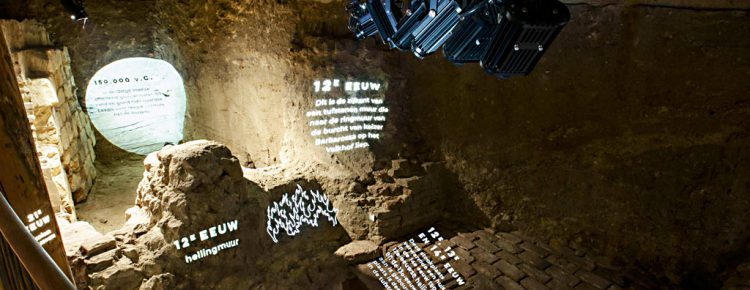De Bastei is a centre for natural and cultural history located in the town of Nijmegen, Netherlands. While excavating for an expansion, the centre discovered archaeological remains of the town buried underneath the building. The project shifted to transform that newly-discovered, subterranean area into a museum that would convey the 2000-year-old history of the town. They hired the creative agency Studio Louter and spatial designers OPERA-Amsterdam to develop an interactive exhibition entitled, Tastbaar Verleden (Tangible Past) .
A major part of the exhibition features projected information about the archaeological finds that were made. Studio Louter and OPERA-Amsterdam utilized projection mapping techniques – for both their digital projections and their traditional gobo projections – to project onto the uneven surfaces of the archaeological remains and to engage visitors with the town’s ancient history.
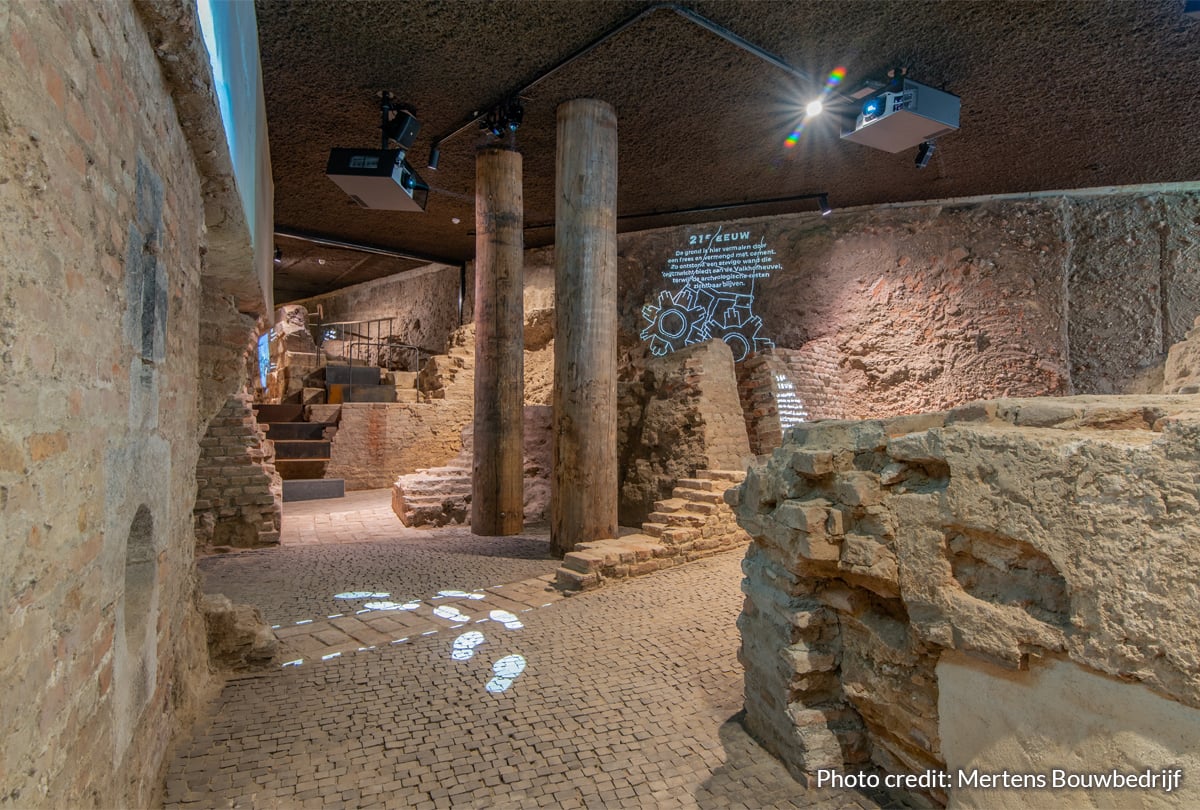 Rosco Image Spot fixtures and video projectors display information on the archaeological finds - in the exact spot where they were discovered.
Rosco Image Spot fixtures and video projectors display information on the archaeological finds - in the exact spot where they were discovered.
Louter and OPERA worked with Rosco dealer Lichtpunt to specify 20 Rosco Image Spot LED fixtures and design Custom Glass Gobos that would reveal the archaeological finds and illustrate how Nijmegen residents have built on the remains of previous inhabitants. The Image Spots, strategically installed throughout the exhibition area, project descriptive text and graphics onto the Roman city walls, late medieval fortifications and early 20th century foundations.
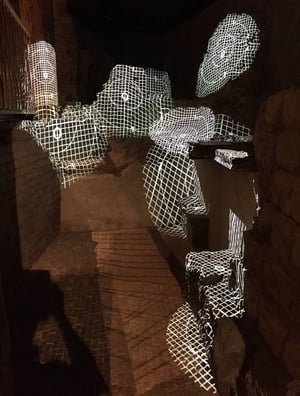 The biggest challenge that Lichtpunt faced was how to create accurate image projections on the uneven and arbitrary surfaces of the historic walls. Lichtpunt used projection mapping to ensure that the written and graphic descriptions would display on the objects clearly and without distortion.
The biggest challenge that Lichtpunt faced was how to create accurate image projections on the uneven and arbitrary surfaces of the historic walls. Lichtpunt used projection mapping to ensure that the written and graphic descriptions would display on the objects clearly and without distortion.
The technique they used involved projecting grid gobos onto the various surfaces to determine the location of the imagery. Graphic designers then used photos of the projected grid gobos (similar to the photo on the left) to determine exactly where to place the text & graphics inside the image area of the gobos in order to create undistorted projections.
When asked why they chose Rosco Image Spot fixtures for this project, Leon van Warmerdam, Lichtpunt President and Lighting Consultant, said: “We were looking for a solid-state light source projector that would deliver a razor sharp projection – of even the smallest details in the graphic artwork and text – with a convincing light output, in a small, dustproof, track-mountable housing, and a shielded gobo compartment.” Van Warmerdam admitted that there was only one option in the market that checked all of those boxes – the Rosco Image Spot.
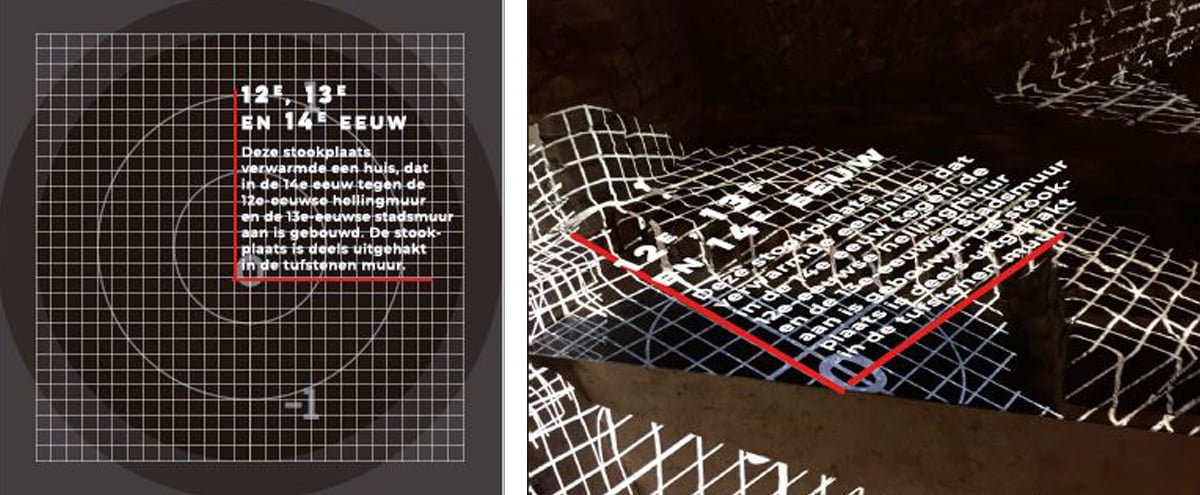
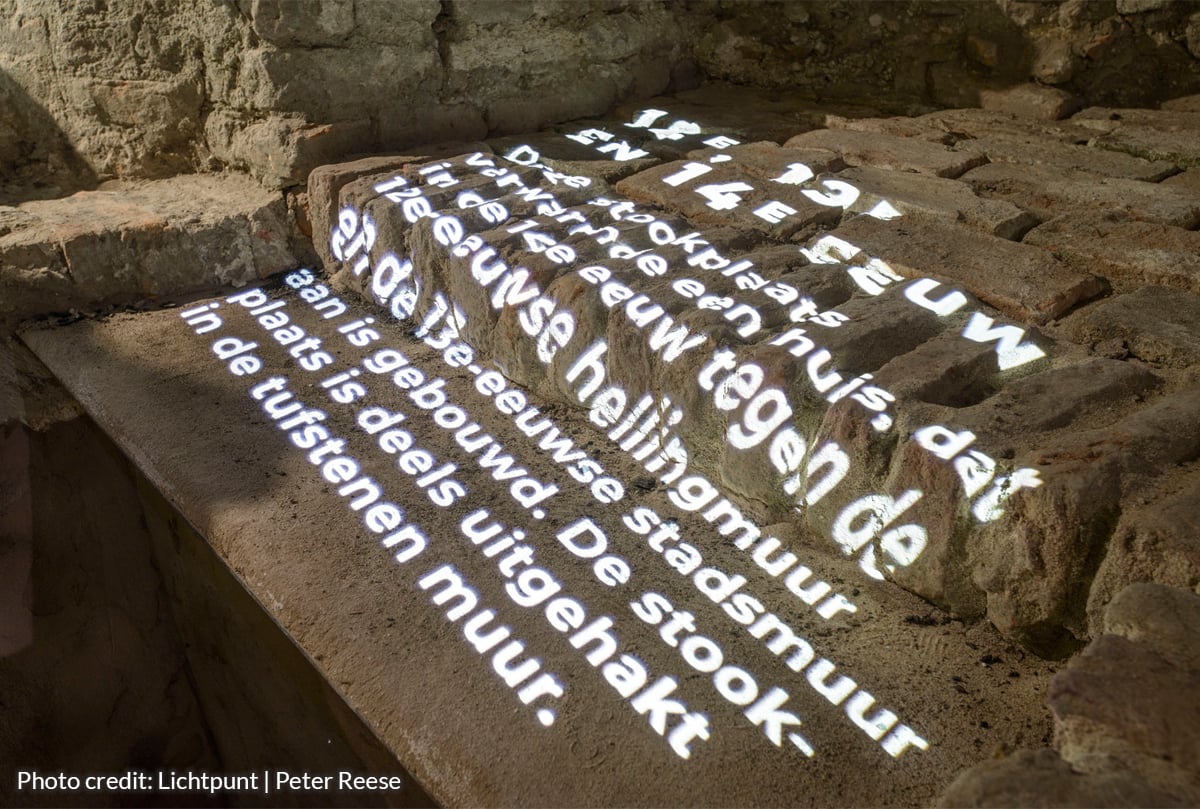 The gobo design in the upper left shows how Lichtpunt used projection mapping techniques to locate the perfect text placement inside the gobo’s image area.
The gobo design in the upper left shows how Lichtpunt used projection mapping techniques to locate the perfect text placement inside the gobo’s image area.
The crystal-clear optics of the Rosco Image Spot ensured perfect rendering of the complex, projection mapped gobo designs. The combination of the fixture’s optics with its bright output delivered sharp and bright image projections on any surface, at the required angle and distance.
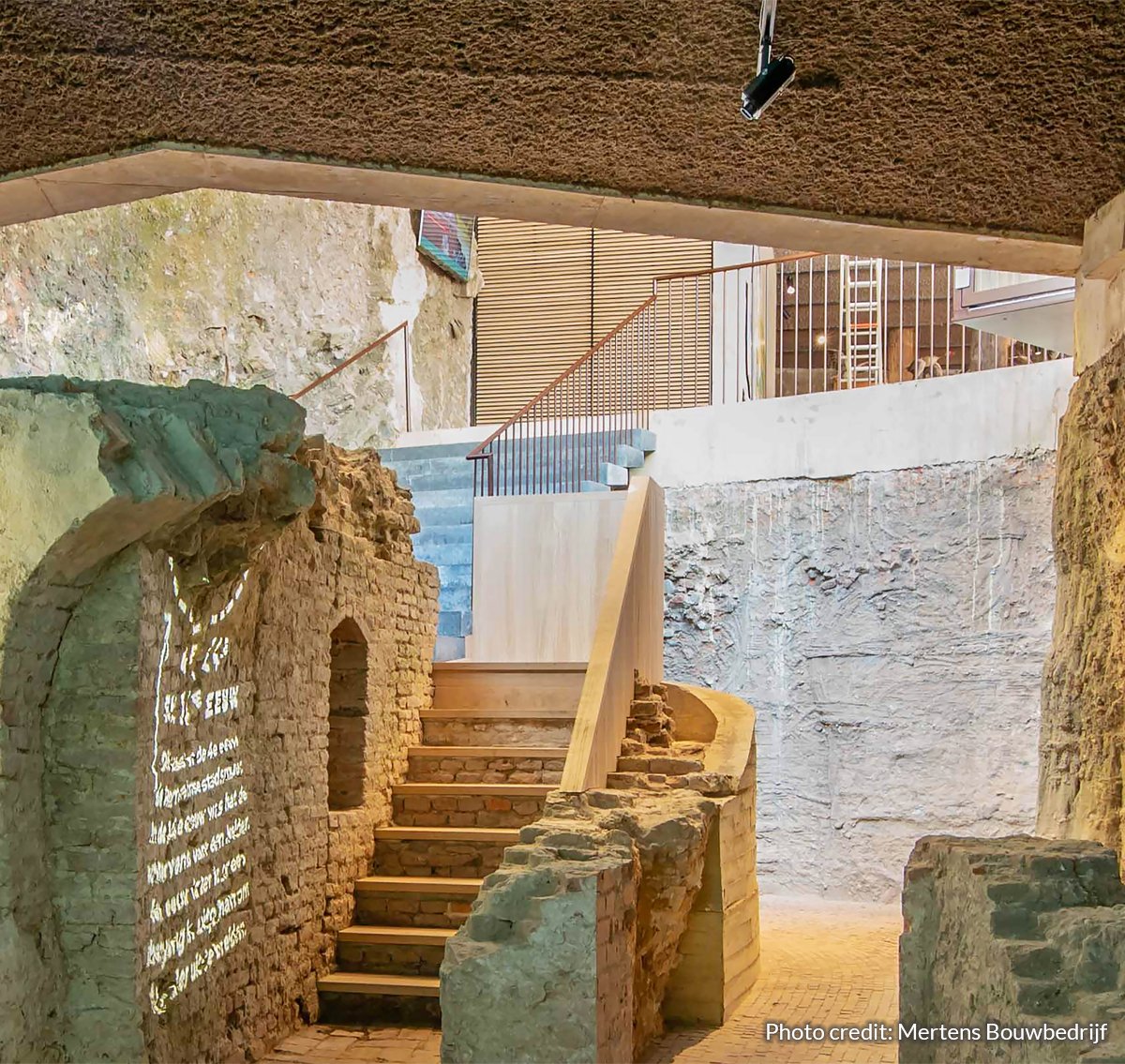 A Rosco Image Spot provides a bright and clear projection from an oblique angle, while remaining barely visible up above.
A Rosco Image Spot provides a bright and clear projection from an oblique angle, while remaining barely visible up above.
The compact Image Spot projectors are installed on track that is suspended from the dark, flaked ceiling. A black finish was chosen for maximum discretion. The fixtures are placed behind the visitor, in the viewing direction, to optimize the appearance of the projected image and minimize the visual impact of the projectors themselves.
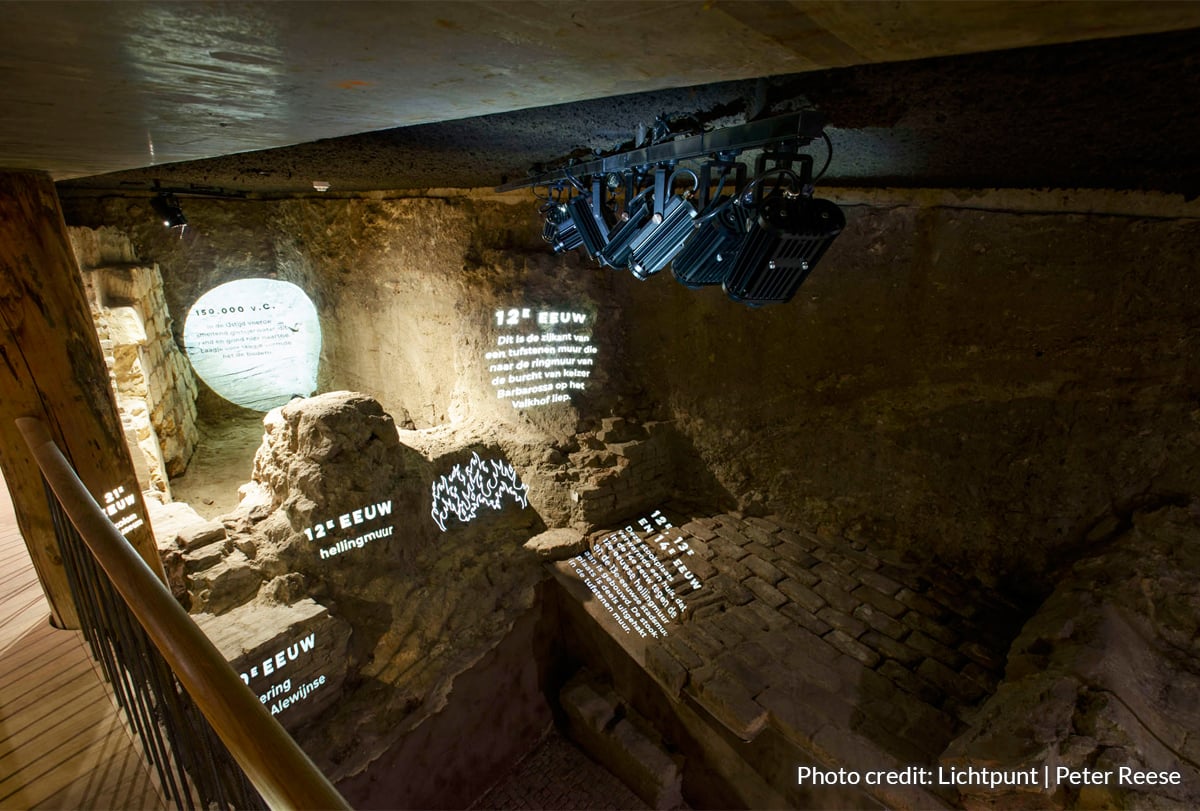 A cluster of Image Spots project written and graphic descriptions onto the archaeology of ancient Nijmegen, including a 14th century fireplace, 12th century ramp wall and a 12th century tufa wall that ran to Emperor Barbarossa’s castle on the Valkhof.
A cluster of Image Spots project written and graphic descriptions onto the archaeology of ancient Nijmegen, including a 14th century fireplace, 12th century ramp wall and a 12th century tufa wall that ran to Emperor Barbarossa’s castle on the Valkhof.
Because Louter and OPERA created a non-linear route for this exhibition, the projections do not offer a chronological storyline and can be viewed and understood in random order. The exhibition’s free itinerary impels visitors to pay extra attention to gobo projections - and the fascinating stories they disclose - engaging them with Nijmegen’s 2000-year history in the most compelling way.
We recommend you visit the De Bastei website to see their current exhibitions and learn more about the oldest town in the Netherlands: www.debastei.nl.
If you’d like to learn more about the products that Studio Louter, OPERA-Amsterdam and Lichtpunt used to connect De Bastei’s visitors with Nijmegen’s ancient history, be sure to explore the Rosco Image Spot and the Custom Gobo product pages on our website.

